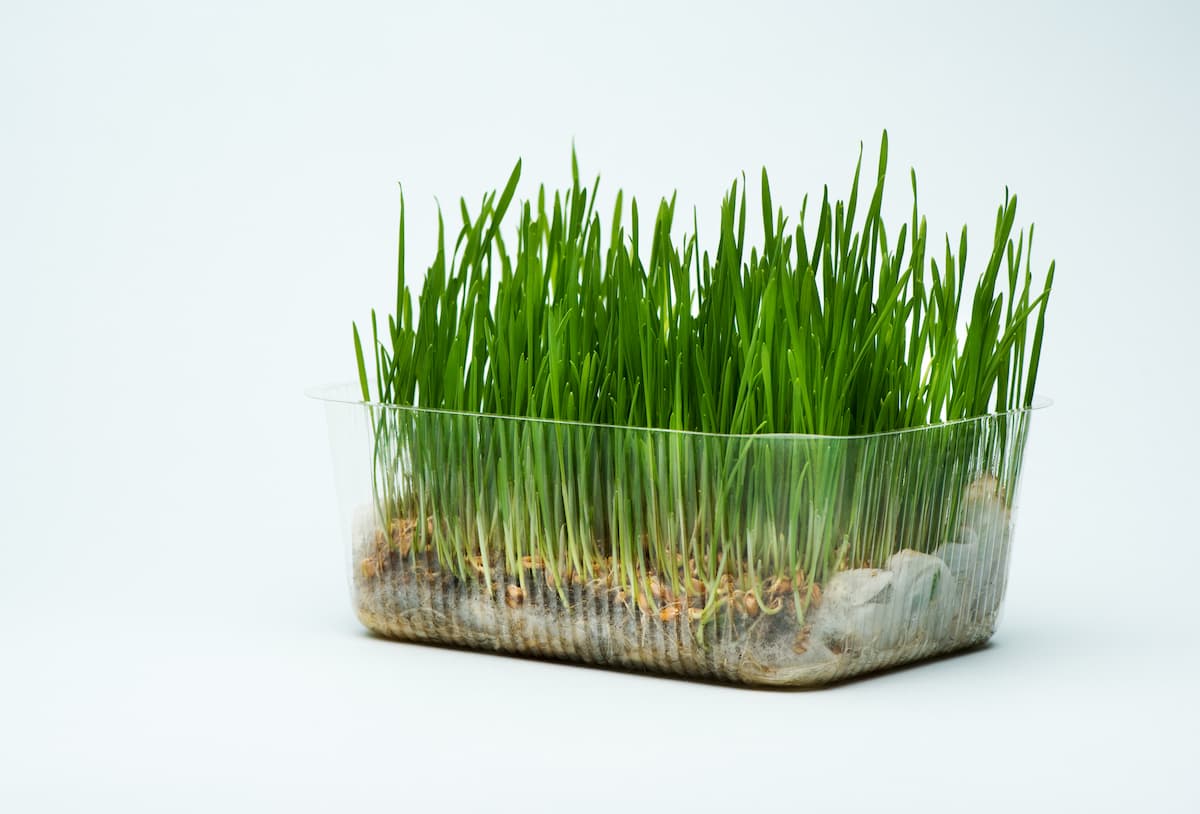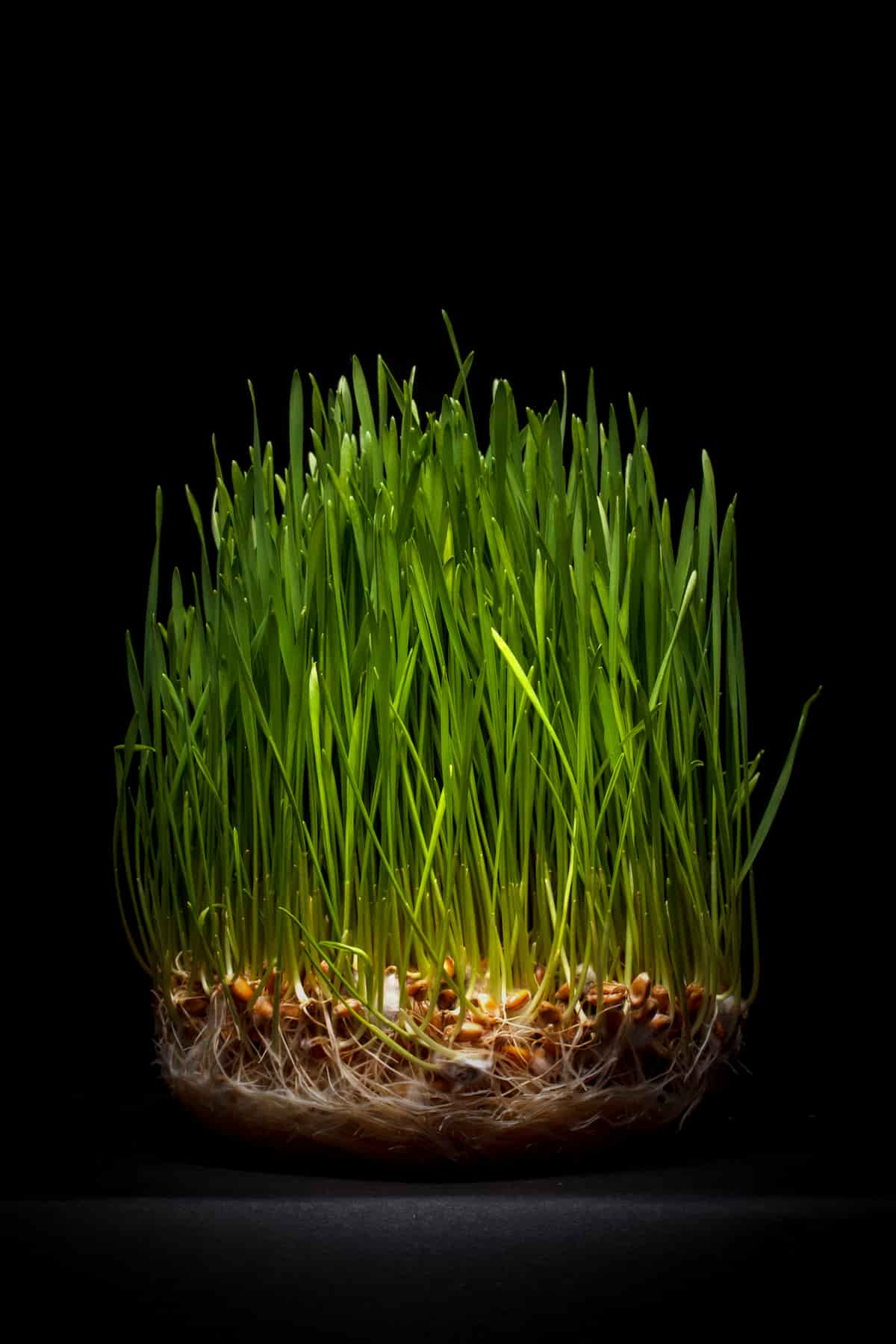Wheatgrass is a great plant for beginner gardeners because it is easy to care for, resistant to pests and diseases, and produces a bountiful harvest in a relatively small space. Wheatgrass is a great plant for microgreens due to its ease of cultivation, high nutritional value, and resistance to pests and diseases. Wheatgrass can be propagated from seeds or root cuttings in containers.

A Step-By-Step Guide for Growing Wheatgrass Microgreens
How Long Do Wheatgrass Microgreens Grow?
Microgreen Wheatgrass is easy to grow and can be harvested in as little as 10 days from sown seeds. Wheatgrass microgreens start to germinate by 2-4 days after planting. Light, heat, and moisture make a difference in the speed of growth.
Steps to Grow Wheatgrass Microgreens Indoors
- Choose the right container – Wheatgrass can easily take up a lot of space in a container, so choose one that will fit your needs. It is best to choose ceramic or plastic pots because they are lightweight and durable.
- Get seeds – Wheatgrass seeds must be stratified (cold treated) to germinate. You must refrigerate the seeds for at least two weeks before planting. You can purchase stratified Wheatgrass seeds from most garden supply stores or online retailers.
- Watch the plants grow – Once they have germinated, water them regularly (at least once daily) and fertilize them with a high-quality organic fertilizer when needed.
- Soak your seeds – Before planting your Wheatgrass seeds, it’s important to soak them for 12 hours in room temperature water. This will soften their hard outer coating and make them more receptive to germination.
- Plant your seeds – Once soaked, place the wet seeds into your chosen container and cover them with soil or composted manure. Ensure adequate drainage and water the plants once per day after that until they start to sprout (about 2-3 days).
- Keep an eye on things – As the plants grow, adjust their watering schedule accordingly — watering twice a day when they’re small and then once per day when they’ve established themselves a bit more deeply into their pots or jars. Do not over-water, however; overwatering can stunt growth and cause root problems for Wheatgrasses.
Tips to Grow Wheatgrass Microgreens
- It would help if you had some Wheatgrass seeds. You can buy them online or at health food stores. Once you have the seeds, you will want to place them in a container with soil.
- Make sure that the soil is moist but not wet. The Wheatgrass seeds will germinate quickly, so ensure you water them regularly.
- Water your plant regularly, especially in the beginning, and keep an eye on them to ensure they get enough sunlight and nutrients.
- Fill the pot with soil or compost, and add Wheatgrass seeds.
In case you missed it: A Step-By-Step Guide for Growing Radish Microgreens: DIY in Simple Way from Seeds in Containers

Growing Wheatgrass Microgreens in Hydroponics
- Growing Wheatgrass microgreens in hydroponics is an easy and sustainable way to get your greens. The process starts by growing the seeds in a container and then transferring them to grow media when ready. Once the plants are established, you can fertilize and water them.
- The important part of this process is monitoring the growth of your plants so you can adjust the amount of water and nutrients you provide. You will also want to watch their appearance to determine when they are mature enough to harvest.
How to Water and Fertilize Wheatgrass Microgreens?
Watering Wheatgrass microgreens is essential for the plant’s health. Remember to water them regularly, especially during the early stages of growth when they are most vulnerable to dehydration. Wheatgrass microgreens need about 1.5-2 ounces of water per inch of height each day, but check the soil moisture level first since too much or too little water can kill the plants. You can also use a digital hygrometer to monitor the moisture levels in your growing container.
Fertilize Wheatgrass microgreens with a balanced organic fertilizer every two weeks while actively growing. Use half the amount of fertilizer you would use on regular lawn grasses. Be sure to remove any brown leaves that appear on the plants, as this indicates that the plant is receiving enough nutrients.
Growing Wheatgrass Microgreens in Paper Towel
The key to growing Wheatgrass microgreens successfully is starting with healthy plants. Ensure to get seeds specifically designed for growing Wheatgrass, as other types will not do well in this particular environment. Wheatgrass seedlings need warm temperatures and plenty of light to grow well, so ensure you have enough space in your paper towel setup. Keep the soil moist but not wet, and provide shade, if necessary, during the hottest part of the day.
Simple Way to Grow Wheatgrass Microgreens from Seeds in Containers
- If you have been looking for a simple way to grow Wheatgrass microgreens from seeds in containers, this guide is for you. Wheatgrass microgreens are a great way to get your daily dose of chlorophyll and nutrients and add beauty and nutrition to your diet.
- Wheatgrass microgreens can be grown in any container with at least one inch of potting soil on the bottom. Choose a container with plenty of drainage so the plants don’t get wet. You must provide enough light for the plants, but avoid direct sunlight because it can damage the leaves. You can water your plants once or twice a day, depending on how dry the soil is.
- Soak your Wheatgrass seeds in water overnight or for at least 12 hours to germinate them. After soaking, rinse the seeds into a fine-mesh strainer with cold water. Ensure the seeds are completely soaked before planting them into the soil mixture. Plant them about 1/4 inch deep and sprinkle some salt over them.
- Finally, cover the seeds with just enough soil to cover them up and water lightly until they germinate (about two days). Once germinating, remove the seedlings from their pots and carefully transplant them into new containers filled with fresh soil mix. Keep watering them until they reach desired height (about four weeks); they reach the desired harvest carefully.
In case you missed it: The Benefits of Using Himalayan Salt for Plants: How and When to Apply

Conclusion
Wheatgrass microgreens are a food that is becoming more and more popular. They are used as a salad green or additive to flavor dishes. Wheatgrass microgreens can be grown in containers and are very easy to grow. Wheatgrass microgreens are succulent greens that are typically eaten as a salad greens.
- Feed Your Flock for Less: Top 10 Tips to Save on Chicken Feed
- Ultimate Guide to Ossabaw Island Hog: Breeding, Raising, Diet, and Care
- Hatching Answers: The Top 10 Reasons Your Chickens Aren’t Laying Eggs
- Eggs and Economics: Breaking Down the Cost of Raising Backyard Chickens
- Defend Your Greens: Proven Methods to Keep Iguanas Out of Your Garden
- Ultimate Guide to Cinnamon Queen Chicken: A Comprehensive Guide for Beginners
- Ultimate Guide to California Tan Chicken: Breeding, Raising, Diet, Egg-Production and Care
- Ultimate Guide to Marsh Daisy Chicken: Breeding, Raising, Diet, and Care
- 10 Types of Chicken Farming Businesses You Can Start for Profits